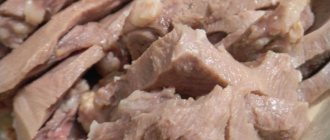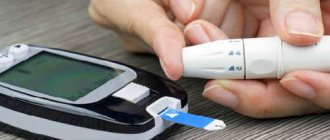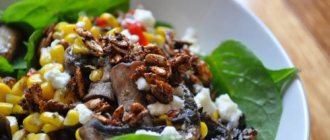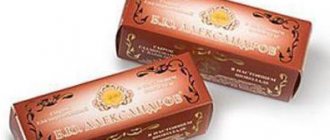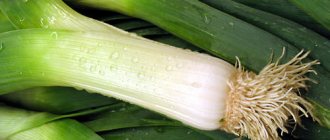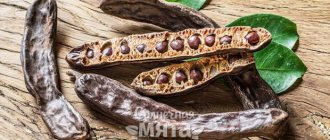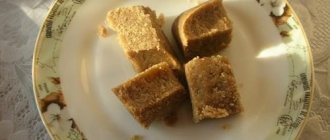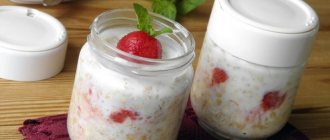Sunflower is not only a valuable oilseed crop, actively grown in many countries, but also an excellent honey plant. This plant blooms from about mid-July, and its flowering lasts about a month. During this period, bees living near the sunflower field actively collect pollen and nectar from it, and the honey they produce is called sunflower.
- Characteristics and distinctive features Color
- Aroma
- Taste qualities
- Calorie content
- To strengthen the immune system
- For anemia
- Buckwheat
Characteristics and distinctive features
Sunflower honey is perhaps the most common and inexpensive type, since this crop is intensively grown in our country. But this does not negate its valuable qualities. Some people are put off by the rapid crystallization of this product, but for good reason. Sunflower honey has a number of advantages and is no less useful than other types. Another distinctive feature is its lack of stickiness.
Did you know? Near the sunflower fields, hives with bees are placed not only for honey, but also for good pollination. Sunflower is a cross-pollinated crop; the active work of bees in a sunflower field can almost double the yield. In addition, early pollination can speed up the ripening of the crop by a maximum of two weeks.
Color
When sunflower honey has just recently been harvested, it has a lighter color. But when it crystallizes, it acquires a rich warm yellow color with mustard shades. A whitish coating appears on the surface - a crust of glucose.
Oregano, clover, rose hips, linden, acacia, sainfoin, raspberries, and sweet clover produce white honey.
Aroma
This type of beekeeping product does not have a very pronounced honey aroma. It smells of hay and wet pollen, as well as fruity apricot notes. Some people smell the smell of fried potatoes in it. The aroma is more pronounced before crystallization than after.
Taste qualities
Not particularly sharp, with a slight bitterness, pleasant sweet honey taste. Immediately after consumption, my throat feels a little sore.
Crystallization
Rapid crystallization is a distinctive feature of this honey. It remains in a liquid state for no more than three weeks, but more often it becomes thick after two weeks. At the same time, it acquires the consistency of lard with small yellow crystals that easily melt in the mouth. In honeycombs it crystallizes later. This feature does not allow it to be left for feeding bees for the winter. Over time, when sunflower honey sets, it becomes quite hard.
This rapid crystallization process occurs due to the presence of a large amount of glucose in this product - about 1.5 times more than in other types.
Description and characteristics of sunflower honey
This product can be immediately distinguished by its characteristic features.
What does it look like
Quickly crystallizing honey when thickened resembles dough or lard, covered with sugar crystals instead of salt.
Did you know? The diet of Japanese, Chinese and South Korean preschoolers and schoolchildren necessarily includes honey. And not just any kind, but sunflower.
Color
The freshly pumped product has a bright yellow or golden color, which darkens somewhat as it thickens, and when completely crystallized, it is covered with a white glucose crust.
Taste and aroma
Sunflower honey does not smell like honey at all. Some people detect the smell of hay in it, others - flower-pollen shades of the smell, and still others - even the aroma of fried potatoes. After crystallization, the aromas emitted by the bee product become even less noticeable. But its taste fully meets honey standards, possessing a characteristic bitterness.
Sugaring time
This variety crystallizes so intensively that within 2 weeks, maximum 3 after pumping, it becomes a thick mass covered with a white crust of glucose. And although the crystallization process in honeycombs is not so active, this honey is not recommended by beekeepers as bee food left for the winter.
What does it contain?
As we have already said, sunflower honey is the leader in glucose content among beekeeping products. Otherwise, its composition is not so radically different from other types, but thanks to the sunflower oilseed culture it contains more vitamins and. It also has the largest amount of β-carotene compared to other varieties.
We advise you to read about the benefits and methods of using bee products: propolis, honey with propolis, zabrus, bee pollen, dead bees.
Calorie content
Sunflower honey has a high calorie content - 320 kcal per 100 grams . But this product is consumed in small quantities. It is recommended to take 50-90 g daily depending on body weight.
The nutritional value
Of course, the composition of honey is also influenced by the plants blooming nearby, the type of sunflower, and in which region it grows. But in any case, it contains the lion’s share of nectar and pollen from sunflowers. Like any honey collected by bees, it will have approximately the following composition:
- carbohydrates (glucose, fructose, some sucrose and others) - 81%;
- water - 19%;
- vitamins, proteins, enzymes, amino acids, dextrins - 3%;
- minerals - 1%.
Did you know? Many countries have introduced sunflower honey into school meals, since among all varieties of flower honey it contains the most glucose, which is a source of energy for the body and stimulates brain activity.
.
Vitamins and minerals
The composition of any honey is very rich and consists of more than three hundred compounds that are in an easily digestible form for the human body and are quickly absorbed into the blood. It includes the following bioactive substances:
- vitamins (, E, PP, , and group of vitamins B), β-carotene;
- enzymes, proteins, amino acids and antioxidants;
- minerals. Mostly potassium and iodine, to a lesser extent copper, manganese, sodium, magnesium, calcium, selenium, phosphorus and other chemical elements.
Sunflower honey includes some substances that are contained specifically in the “sunny flower” - choline, betaine, solantic acid.
It also contains organic acids. When processing nectar, bees enrich it with enzymes such as invertase, catalase, phosphatase, and diastase.
Contains 27 amino acids necessary for the body, many of which are essential for humans, since they enter the body only with food. Most of all proline, phenylalanine, glutamic acid, aspartic acid, tyrosine.
Minerals and vitamins
Frame with honey
Sunflower nectar combines many vitamin and mineral components - scientists have counted almost 300 of them. At the same time, the body is able to easily absorb them. These useful components of the bee processing product have a positive effect on the human body. The described type of honey contains the following bioactive substances:
- vitamin complex C, H, K, beta-carotene;
- proteins, amino acids;
- minerals.
Honey also contains a small dose of choline, betaine, and solantic acid. It also contains organic acids. Sunflower honey also contains 27 amino acids essential for the normal functioning of the body.
Sunflower nectar combines many vitamin and mineral components
Beneficial properties of sunflower honey
This beekeeping product has a number of healing properties and can help with many ailments.
Its high level of glucose will help you recover from injuries and surgeries, gain weight, strengthen your heart and improve your well-being.
Like any flower honey, it has anti-inflammatory, bactericidal, stimulating, tonic, restorative, soothing and other effects on the human body. But it is precisely in it that there is the most glucose, which is the main source of energy for nerve and muscle cells.
To strengthen the immune system
The beneficial properties of this product are effectively used for the treatment and prevention of colds, as it has anti-inflammatory, bactericidal and antiviral properties. It perfectly strengthens the human immune system and gives a boost of energy to effectively fight against adverse factors.
Description and useful properties of the product
Many people know about the amazing properties of honey. This beloved sweet can cure many serious health problems such as liver and kidney diseases, inflammation and cataracts of the eyes, gastritis and hemorrhoids, pneumonia, colds and even cancer. Even children are delighted with this natural medicine.
There are many types of this drug produced by bees and each has its own characteristics.
Composition of honey
- a huge amount of amino acids,
- synthesizing proteins
- rare unique enzymes,
- vitamins A, E, PP,
- carotene and lecithin,
- strengthens the heart muscle and immunity.
At the moment of crystallization, glucose is formed on it in the form of a fine-grained crust, which has an antimicrobial, soothing, antiseptic and diuretic effect.
How not to make mistakes when buying
Due to its high crystallization, this product is difficult to package. Sunflower honey is bought at the market or at fairs, but it is best to purchase it directly from trusted beekeepers who have already proven themselves to be conscientious sellers. It is never passed off as other types of honey, since it is already the cheapest. It is distinguished by its high density, yellow color, and weak but pleasant honey aroma.
Take a dessert spoon with you and ask the seller to let you try the product. The grains of this honey quickly melt on the tongue, have a delicate texture, and your throat should feel a little sore afterwards. Too thin honey should alert you; the presence of a caramel aftertaste or sour taste are signs of a poor quality product. A small white glucose crust is considered normal.
If the bees were actively fed with sugar syrup, then such honey will have no aroma.
You can first buy a small amount of honey from your chosen seller and experiment at home by adding iodine to it. You need to dissolve it in water, add a few drops of iodine: if the solution turns blue, then starch was added to the product.
How to determine whether sunflower honey is natural at home
A natural sunflower variety must meet the conditions discussed above.
In addition, at home, the usefulness of the product can be checked in the following ways:
- You need to try to rub a drop of it between your fingers. If the fingers noticeably stick together due to the adhesive film formed between them, then the product is natural. Otherwise, either a watery consistency will form between the fingers, or a lump will form that rolls between the fingers.
- If you drop a drop of natural honey on a napkin, it will not spread.
- When mixing the product being tested with water, additives will be released from the counterfeit product and settle to the bottom.
- If you add a few drops of iodine to a container with liquid honey and stir the mixture, then if it turns blue, you should be talking about the presence of starch in the product.
- When vinegar is added to the product being tested, the hissing that appears indicates the presence of chalk in the counterfeit product.
- If a 10% honey solution is poured into medical alcohol in a 4:1 ratio, the resulting white precipitate will indicate the presence of sugar molasses in the fake.
- One of the simplest and most effective methods for checking naturalness is to observe a small amount of the product placed on a piece of paper. If after 5 minutes a wet spot appears on the back of the paper, it should be considered counterfeit. Natural honey does not leave a wet spot. This verification method is convenient to use when purchasing it on the market.
- The authenticity of the crystallized bee product can be verified using fire. Natural honey will simply melt under the influence of fire. When the counterfeit product comes into contact with fire, it will begin to hiss and crackle, which indicates the presence of third-party ingredients.
- It is easy to determine the authenticity of liquid honey by dipping a piece of bread into it. If after a quarter of an hour the bread does not soften, then the product is natural. Soaking of the bread indicates the presence of fake sugar syrup.
Video: How to distinguish real honey from fake
Storage conditions
In order to preserve the beneficial properties of sunflower honey, it must be stored in a place protected from direct sunlight, at a temperature ranging from 4 to 20°C , and humidity should not exceed 75% . At a temperature of 37°C, it loses almost 200 useful components.
The containers for storing honey must be washed well beforehand. A container made of glass, clay or porcelain is suitable for this purpose. It is strictly forbidden to store this product in a metal container, as it oxidizes and becomes harmful to health. It is very practical to store in glass jars. Since this product absorbs odors well, it should not be stored with substances that have a strong odor (paint, kerosene, gasoline, etc.)
Product Description
Freshly collected sunflower nectar has a bright amber-yellow color, with possible green or mustard tints. The smell is well-defined floral-honey with fruity notes, possibly the presence of the aroma of hay. Over time, the aroma fades and becomes less bright. The taste is interesting, delicate, you can feel a slight sourness.
Sunflower honey completely crystallizes within three weeks after pumping it out; there have been cases when the substance began to crystallize while still in the comb. After hardening, the substance acquires a coarse-grained structure, there is practically no viscosity, but this does not reduce its usefulness.
At the end of sugaring, a white crust appears on the surface; it peels off easily with physical impact. This crust is nothing other than glucose, and this is an important characteristic that will help recognize natural honey.
Sunflower honey differs from its counterparts in the increased amount of glucose in its composition; the volume of vitamins and enzymes is also higher than the average. According to the results of the study, sunflower dessert contains a rich set of amino acids, beneficial antioxidants and enzymes. The vitamin composition is represented mainly by vitamins PP, E, A.
How to use and where to add it
Due to its excellent taste and beneficial qualities, sunflower honey has been widely used for cooking for many centuries. In ancient times it was used as a sweetener instead of sugar . This sweetness is still added to the dough for the preparation of many confectionery products. But they always put less honey in the dough than sugar. Each of us tried honey gingerbread or Honey cake. Baked goods with the addition of this product retain their freshness much longer. Thus, the famous Tula honey gingerbreads could be stored for years.
In cooking, honey is added to porridge, cottage cheese, and consumed with berries and nuts.
Familiarize yourself with the beneficial properties and uses of nuts: walnuts, black nuts, cashews, nutmeg.
Sbitni and jam are cooked with honey, honey kvass and halva are made. Honey is also used to prepare meat dishes. So, if you brush the skin of a chicken with honey and mustard, it turns out crispy and golden when baked.
Honey is also used for preservation as an excellent marinade with the addition of a variety of herbs and seasonings. Due to its chemical composition, it is an excellent preservative and prevents products from spoiling and oxidizing.
It can be added to various drinks, salad dressings, and some desserts.
For what diseases is it used?
For colds, it is recommended to dissolve sunflower honey 1 spoon (small for children, large for adults) per day. Another way to use it is in making drinks. A common recipe: combine a teaspoon of nectar with a glass of warm decoction of branches, raspberries and red rowan. The second option is warm water with lemon juice.
Is it possible to give honey to children under one year old?
To treat chronic inflammation of the tonsils, drinks containing sunflower nectar are also common. Other treatments:
- throat ointment – combine aloe extract with bee product (1:3), lubricate tonsils 3 times a day;
- gargling - dissolve 4 small spoons of nectar in a glass of warm water, gargle 5 times a day.
For diabetes mellitus, doctors allow consuming 1 small spoon of sunflower product per day. It is better to consume honey in a comb or as a cinnamon drink. It is allowed to replace sugar with bee products only after consultation with your doctor.
The following methods are recommended for the treatment of prostate inflammation for men:
- consumption of honey and pollen in their pure form - they deliver amino acids to the body that are involved in the functioning of the prostate;
- the use of honey solutions by giving enemas and rinsing the urethra - only after approval by a doctor.
During inflammatory processes on the skin, pure nectar or a mixture with beneficial components is common. For example, a mixture of honey with apple, lemon juice and crushed oatmeal is used to cover the skin.
For people with high blood pressure, doctors recommend consuming 2 small spoons of bee product per day. To enhance the effect, it is better to prepare a mixture of honey, walnuts, lemon juice and dried fruits. The result is achieved thanks to acetylcholine, which helps saturate the heart muscle with nutrients.
If there is a high level of cholesterol in the blood, drinking a mixture of sunflower nectar with lemon juice, cinnamon, and a decoction of medicinal herbs will help. This will stabilize cholesterol levels, strengthen blood vessels, and maintain tone.
To combat nervous tension, stress, and insomnia, it is enough to consume a spoonful of bee product per day. This approach is used for recovery after surgery, illness, heavy physical and mental stress.
Anti-inflammatory, antimicrobial, wound-healing properties are used to treat gastric ulcers, intestinal ulcers, gastritis, and enteritis. They help fight inflammatory processes in the respiratory system (bronchitis, tracheitis, pharyngitis), viral infections, and colds.
Traditional medicine recipes
Honey has long been used in many traditional medicine recipes to treat various diseases.
Important! When taking honey
orally , it should not be subjected to heat treatment. It is better to take it as food not with a hot drink, but use boiled water at room temperature or slightly warm for this purpose. Juices and fermented milk drinks are also perfect.
For anemia
Due to its rich chemical composition, consumption of sunflower honey in food helps to increase hemoglobin in the blood. For this purpose, patients suffering from anemia are recommended to eat this product for a month, about 100-150 grams every day. It is recommended to drink it with fermented milk products - kefir or sour milk. During the treatment period, you need to eat about three kilograms of this sweet medicine.
For hemorrhoids
Sunflower honey has good healing properties. This ability is used to treat hemorrhoids. To do this, it is used in the following forms:
- consumed internally;
- in the form of gauze lotions;
- in the form of homemade rectal suppositories;
- in the form of an ointment externally;
- dissolve in warm water for sitz baths;
- for microenemas. To do this, a microclyster bulb is filled with honey solution. This treatment for a week helps to significantly improve the condition in the presence of hemorrhoids.
To treat internal nodules, it is better to use honey that has been candied. But for the treatment of external nodes, a liquid product is well suited.
For cracked heels
The healing property of this product is used in the treatment of cracked heels. For this purpose, a honey cake is made as follows - knead the dough from one tablespoon of honey and two tablespoons of flour. Divide the dough into two equal parts. Before going to bed, soak your feet for about ten minutes and apply a honey cake to each heel, fixing it with a bandage or polyethylene, and then put on socks.
In the morning, everything is removed, the cakes are rolled back into a ball for the next use, and the feet are thoroughly washed. The course of treatment is five to six procedures. After this treatment, all the old rough skin will fall away, the cracks will disappear or become noticeably smaller, and the heels will become soft again.
Learn more about heel care.
To treat cracked heels, you can prepare a special ointment at home. To do this, carefully mix 80 grams of honey, 20 grams of fat, 3 grams of “Xeroform”. This ointment is applied to cracks once every two to three days. Then a gauze bandage is placed on the ointment and socks are put on. The course of treatment is three weeks maximum until the cracks are completely healed.
Chemical composition and calorie content
Sunflower honey has a high calorie content due to the large amount of glucose in its composition. Therefore, diabetics and those on a weight loss diet should be careful with it.
| Honey volume | Number of calories |
| Teaspoon (12 g) | 38 |
| Tablespoon (35 g) | 110 |
| Per 100 g of product | 325 |
The chemical composition of sunflower honey is striking in its richness. Per 100 g there are:
- 32-36 g of glucose, 30-33 g of fructose (monosaccharides that do not require the body to break down them);
- enzymes 0.2-0.6 g (normalize the course of most chemical processes in the body, which is especially important after 40 years, when the production of one’s own enzymes decreases);
- free amino acids – less than 0.1 g (all 27 amino acids are present; in the body they perform a construction function in all organ systems);
- minerals – 0.2 – 0.4 g (contains 37 elements; maintains the chemical balance of the body, promotes the normal passage of nerve impulses);
- vitamins - less than 0.01 g (vitamins B, PP, H, C; sunflower honey contains more vitamins than other varieties, because due to the large volumes of work bees leave a lot of pollen in it - the main source of vitamins);
- organic acids – less than 0.01 g (prevent the deposition of salts in the body, normalize the water-salt balance);
- phytoncides (natural antibiotics, strengthen the immune system);
- hormones (primarily acetylcholine, which improves the functioning of the central and peripheral nervous systems, cardiovascular; there is also “growth hormone”, which improves the absorption of iron by the body, helps improve the development of all systems and organs in children).
Contraindications and harm
Sunflower honey has the following list of contraindications :
- Allergies . Sunflower pollen is an allergen, so honey made from it is contraindicated for people suffering from allergic diseases. You can test for allergies to it at home. To do this, apply a drop of this product to your wrist and rub in a little. If an allergic reaction occurs (redness, itching, rash), you should stop eating this honey.
- Pregnant and lactating women . Even if the mother does not have allergies, the child may be negatively affected by allergens entering the body.
- Children's diathesis . Any type of allergen in babies can cause a strong reaction.
- Diabetes . Any honey product contains, in addition to fructose, glucose and sucrose. The consumption rate of these components should be strictly limited by the attending physician for people suffering from diabetes.
- Obesity . Due to the high proportion of carbohydrates it contains, it can contribute to excess weight gain.
Important! If an allergen enters the human body, it can lead to anaphylactic shock. Therefore, if signs such as rash, redness, itching, swelling, fever, respiratory or cardiac problems appear, you should immediately consult a doctor.
This product will be useful for nursing mothers and small children in the absence of allergic reactions. But when it is introduced into the diet, they start with a small spoon and carefully monitor the body’s reactions or use the above-described wrist method to determine allergic reactions.
We advise you to read about proper nutrition for pregnant and nursing mothers, as well as the necessary vitamins for women while expecting and breastfeeding a baby.
Contraindications
Along with its beneficial qualities, flower sunflower honey hides several negative ones. For example, pollen can cause allergies in people. This means that honey collected from a sunflower field can harm the body of allergy sufferers. In controversial cases, you need to apply a drop of honey on your wrist; if an allergic reaction occurs in the form of redness or itching, you should not consume the nectar.
It is not recommended to eat honey during pregnancy and lactation. A sweet product can cause diathesis. Glucose and sucrose in the composition are dangerous for some people, mainly for diabetics and those who are actively fighting obesity.
Other varieties
Along with sunflower, there are many other varieties of honey: linden, angelica, acacia, sweet clover, clover, herbs, buckwheat, pine and others. Their names and features depend on the main honey plant. Let's look at some of them.
Buckwheat
The most common species in our country after sunflower. The peduncle for it is a well-known agricultural crop - buckwheat. It has a sweet taste, brown color and a fragrant floral aroma. It also crystallizes quickly, but is more saturated with vitamins and various microelements than other types. Useful for anemia, weak immunity, digestive diseases.
Diaghilev
Angelica honey is not easy to buy - it is rare and often counterfeited. It is viscous, with a pleasant delicate aroma, its dark color has a red tint. From its peduncle (angelica officinalis), this product has excellent antiseptic properties and the ability to help with gastritis and ulcers of the stomach and intestines, and increase the body's defenses.
Find out more about the composition and properties of buckwheat, angelica, linden and chestnut honey.
Lime
Linden honey has a light yellowish color, after crystallization it becomes almost white. It has a delicate aroma and sweet taste, and it leaves a very sore throat. It is most effective for colds, weak immune systems, and diseases of the gastrointestinal tract. It is very nutritious and promotes weight gain and gives strength.
Sunflower honey will always be popular due to its medicinal and nutritional properties. Do not be confused by its high crystallization and rather weak aroma - its healing properties and nutritional value are no worse than those of other varieties, and in some qualities it even surpasses them. When using this product, you should take into account its ability to cause allergies.
Food Honey Food Bee products
The use of honey in folk medicine
Sunflower-based treats bring great benefits even with normal dietary consumption. But its valuable properties are manifested even more clearly in the treatment of various diseases; the product acts like a real medicine and quickly improves well-being.
Sunflower honey for anemia
The bee product is a real vitamin cocktail, so it helps to quickly increase hemoglobin in the blood and restore vitality. For anemia, patients are recommended to consume 100-150 g of sunflower honey daily for a month.
You need to wash down the treat with kefir or yogurt. In just 30 days you need to take about 3 kg of natural medicine.
Sunflower honey for hemorrhoids
The healing properties of bee delicacy are beneficial for external and internal hemorrhoids. Sunflower honey is used in several ways:
- consume 80-100 g per day orally;
- make gauze lotions for the anus;
- dissolve the product in sitz baths and take them for 15-20 minutes.
Another treatment method suggests dissolving 100 g of fresh delicacy in 500 ml of water, stirring thoroughly and using it as a microenema for internal hemorrhoids. Only 50 ml of the medicinal product is injected into the anus, manipulations are carried out twice a day for a month.
In folk recipes, sunflower honey is recommended to be used for colds, intestinal diseases and even hemorrhoids
Honey for treating colds
Sunflower honey product has a very powerful positive effect on ARVI and influenza. You can simply suck on 1 spoon of bee delicacy per day shortly before meals, or you can prepare healing drinks. For example, this recipe is popular:
- a small spoon of the product is added to the decoction of raspberry and rowan berries;
- Stir the product properly;
- Take a healthy drink three times a day, warm, until the condition improves.
Regular lemon water with bee treat also has a good effect.
Sunflower honey for inflammation of the tonsils
For sore throat and inflammation of the tonsils, it is recommended to rinse with a honey solution. You need to dilute 4 small spoons of the sweet treat in 250 ml of warm water, and then treat your throat with this remedy up to 5 times a day.
You can also lubricate inflamed tonsils. To do this, sunflower honey is mixed with aloe juice in a ratio of 3 to 1 and applied to the affected areas three times a day.
For a sore throat, sunflower honey can be used to lubricate a sore throat.
